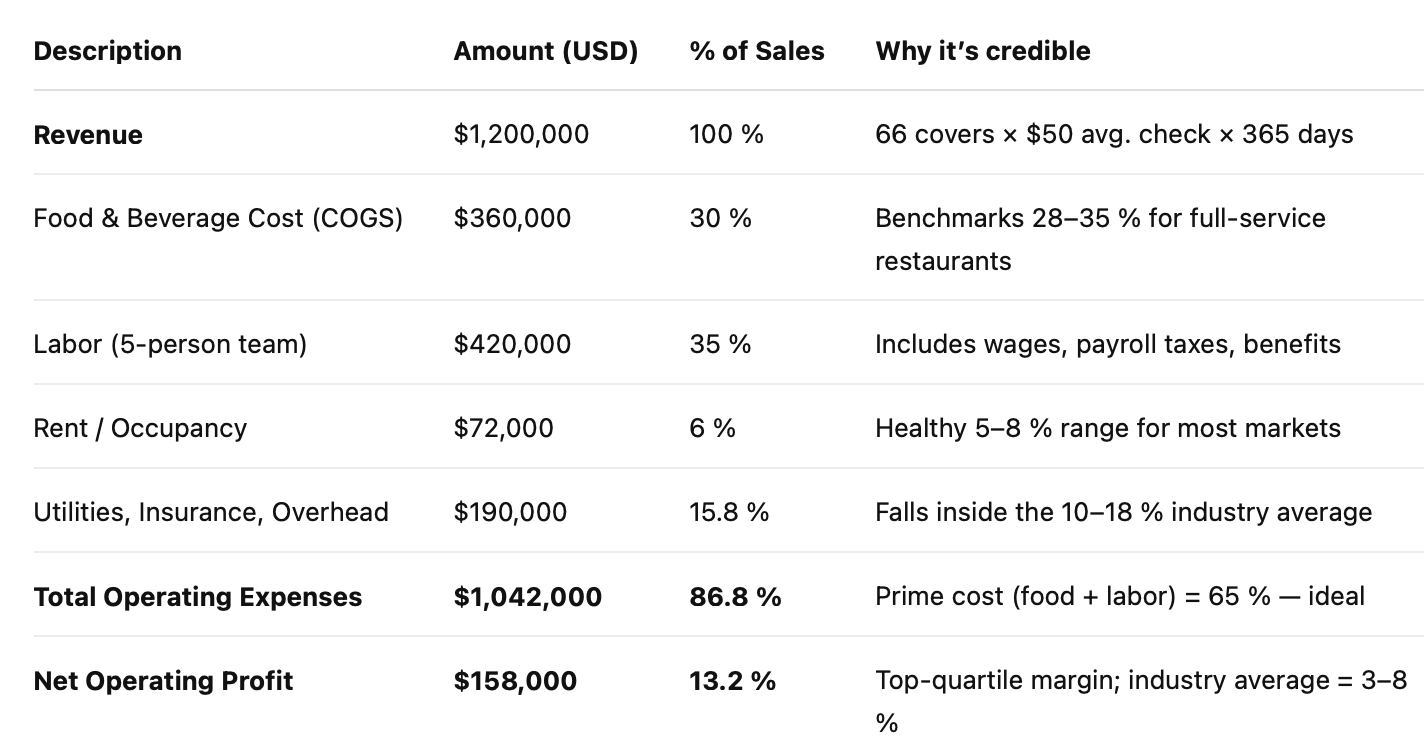📊 Finance Through the Lens of a Restaurant
🍷 If you can manage a restaurant’s numbers, you can run nearly any business.
Meet Paul, an aspiring restaurateur with a dream to serve exquisite Thai-French fusion cuisine.
1. CAPEX vs OPEX: The Foundation and the Fuel
To get started, Paul has two options :
Option A: Build from scratch
Paul could construct a beautiful two-story building with a terrace. The cost? $2 million upfront.
This is Capital Expenditure (CAPEX) — one-time investments in physical assets that will serve the business long-term. It’s like buying the car instead of renting a cab daily.
Option B: Rent a cozy city-center space
Instead, Paul finds a charming spot downtown for $72,000 per year.
This is Operating Expenditure (OPEX) — recurring costs for running the business day to day.
He chooses Option B to preserve cash and reduce risk.
2. The Setup: Fixed and Variable Costs
After months of planning, design, and menu testing, Paul finally opens the restaurant.
🧑🍳 Team Setup (Fixed Costs - OPEX)
He hires a solid crew:
1 Head Chef
1 Sous Chef
2 Waiters
1 Front Desk Host
Total annual salary expense: $420,000
This is a fixed operating expense — it doesn’t change based on how many guests show up.
🥕 Ingredients & Supplies (Variable Costs - OPEX)
To serve his delicious meals, he needs fresh produce, spices, and wine.
These raw materials cost $360,000 per year, and they scale with the number of meals served.
These are variable costs — if no one eats, he doesn’t need ingredients.
💡 Utilities and Other Ongoing Expenses
Things like electricity, water, marketing, insurance, POS software, repairs, linens, etc.
These fall under OPEX, often fixed or semi-variable. Annual cost: $190,000
3. Revenue and Profitability
Paul’s restaurant becomes a hit!
👥 Customer Flow
He serves 66 guests per day, across lunch and dinner.
💸 Revenue
The average customer spends $50 per meal:
66 guests/day × 365 days × $50 = $1,200,000 in annual revenue
4. The P&L Snapshot
5. What Paul Can Do With Profit
Paul now has $158,000 in net profit. This is the bottom line — the sweet fruit of all his planning.
He has choices:
🏡 Take it home as a dividend or salary (owner’s earnings)
🔧 Reinvest in upgrading the terrace, adding heaters, or launching delivery
📈 Save to eventually build his dream 2-story terrace restaurant (future CAPEX)
6. Bonus: Cash Flow and Break-Even
💰 Break-even point: When revenue = total operating expenses. For Paul, that’s roughly 52 guests per day.
💸 Cash flow ≠ profit: Even if the restaurant earns profit on paper, cash must be well managed to handle supplier payments, tax deadlines, and equipment emergencies.
🍽️ Conclusion
Running a restaurant is a perfect microcosm of managing a business financially:
CAPEX builds your infrastructure.
OPEX fuels day-to-day operations.
Fixed vs Variable Costs define your scalability and risk.
Profitability is about margin discipline, not just revenue.
Cash Flow is your true oxygen — run out, and it’s game over.
🍷 If you can manage a restaurant’s numbers, you can run nearly any business.




